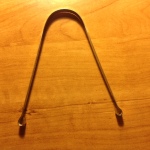Stress often contributes to weight gain through emotional eating and the production of hormones associated with weight gain. Excessive weight is associated with many unwelcome and avoidable health issues.
STRESS AS A NATURAL OCCURRENCE
Our bodies are designed to handle variations from diet, exercise, stress and weight. It regularly produces various hormones for a period of time to take care of these situations. All this is a normal cycle for the body.
STRESS & HORMONES
The challenge is when that stressor continues for a prolonged period of time. This causes the body to overproduce hormones thus stressing the entire system; breaking down cells, tissues, and organs.
When our body undergoes a stress, the adrenal glands produce adrenaline aka epinephrine. This hormone stimulates the heart muscle, alters the rate of blood flow, and raises basal metabolic rate. This is known as the fight or flight syndrome. Epinephrine also prompts the secretion of glucagon by the pancreas, causing the release of nutrients from storage. The steroid hormone cortisol is also produced. It enhances protein degradation, which raises amino acid levels in the blood so that they become available for conversion of glucose. The two other hormones induced by stress, aldosterone and antidiuretic hormone both help to maintain blood volume.[1]
Epinephrine does not stick around very long in the body however, when stress is prolonged, cortisol does. This hormone will affect the body in detrimental many ways. [2]Excess cortisol will:
- Decrease metabolism by inhibiting thyroid function
- Depletes protein in the muscles, bones, connective tissue and skin which can cause fatigue, weakness, thinning of the bones, and bruising
- Decreases the production of androgens and growth hormones which build muscles
- Can cause insulin resistance[3]
- Increase fat accumulation, especially in the belly
- Increase appetite and carbohydrate cravings
- Will cause depression, anxiety, and mood swings
- Is cortisol related to abdominal obesity?
“Yes. There is a link between high cortisol levels and storage of body fat, particularly “visceral” abdominal body fat (also known as intra-abdominal fat). Visceral fat is stored deeper in the abdominal cavity and around the internal organs, whereas “regular” fat is stored below the skin (known as subcutaneous fat). Visceral fat is particularly unhealthy because it is a risk factor for heart disease and diabetes.”[4]
The challenge with cortisol and weight is this. First, when you are stressed you produce more cortisol which will lead to weight gain. When you are overweight the adrenal glands produce more cortisol so it is a viscous cycle.
ADDITIONAL AFFECTS FROM STRESS
Free radical production
THE NEGATIVE ROLE OF CERTAIN FOODS & DRINKS
Food can play an important role in both exacerbating the problem and relieving the problem.
The following list will cause the adrenal glands to produce adrenaline and cortisol. Over the long term this will eventually exhaust the adrenals:
- Caffeine, especially beyond one or two cups a day on a regular basis will actually act like long term stress in the body
- Chocolate in excess as it will act as a stimulant
- Soda will affect blood sugar levels as well increase production of stress hormones
- Heavy alcohol consumption will cause the adrenals to overreact
- Refined foods and sugar will affect insulin production and consequently blood sugar spikes and falls
- Refined foods will deplete the body of essential vitamins and minerals thus stressing the entire system
- Refined salt is chemically cleaned and devoid of all minerals and will increase blood pressure
- Can create a more acid pH in the body, which allows for disease to develop
THE ROLE OF HEALTHY FOODS
The following is a list of vitamins and minerals that will support the body during stressful times and therefore should be included in your daily meals:
- B Complex is necessary for the production of all neurotransmitters including Seratonin, which is a calming neurotransmitter, and it is vital for the functioning of the adrenal glands. Foods high in the B vitamins include: dark leafy green vegetables, wheat germ, brewer’s yeast, most grains
- Vitamin C is depleted with prolonged bouts of stress and is also required for normal functioning of the adrenal glands. Sources include: fruits especially citrus and berries, tomatoes and green vegetables
- Vitamin A is an antioxidant thus maintaining the health of the cells. Foods rich in A include: milk, eggs, butter, and fruit
- Vitamin E is also an antioxidant. Foods rich in E include: nuts, germ oils and green leafy vegetables
- Minerals, especially magnesium which relaxes muscles. Sources of magnesium include: leafy green vegetables, beans and legumes, vegetables, seaweed, nuts (almonds, cashews and filberts especially) and seeds (especially sesame)
- Omega 3 fatty acids have a positive effect on moods. Sources include: salmon, tuna, sardines, flax seed oil, pumpkin oil, dark green vegetables
- Night shade vegetables as they have an expansive effect and therefore might be beneficial for someone tense from work, stress or activity which takes great concentration.[5] Nightshade include; all peppers, tomatoes, potatoes, eggplant
WHAT YOUR DIET SHOULD INCLUDE
- Salmon
- Eggs
- Lots of leafy and dark green vegetables
- Night shade vegetables, if you can handle them
- Almonds, cashews, filberts and sesame seeds
- Beans and legumes
- Citrus fruits and berries
OTHER THINGS TO LOOK AT TO REDUCE THE AFFECTS OF STRESS
EXERCISE
- Moderate levels are best with a duration lasting less than one hour
- Critical to maintain optimal cortisol levels and hormone balance
- Helps handle stress by improving cardiovascular and musculoskeletal systems
- Improves insulin resistance (studies have shown that as little as 3 weeks of regular exercise can lessen insulin resistance[6])
LAUGHTER
- Using a similar protocol, the current research found that the same anticipation of laughter also reduced the levels of three stress hormones. Cortisol (termed “the stress hormone”), epinephrine (also known as adrenaline) and dopac, a dopamine catabolite (brain chemical which helps produce epinephrine), were reduced 39, 70 and 38 percent, respectively (statistically significant compared to the control group). Chronically released high stress hormone levels can weaken the immune system. [7]
MEDITATION
- The study, done in China, randomly assigned college undergraduate students to 40-person experimental or control groups. The experimental group received five days of meditation training using a technique called the integrative body-mind training (IBMT). The control group got five days of relaxation training. Before and after training both groups took tests involving attention and reaction to mental stress.
- The experimental group showed greater improvement than the control in an attention test designed to measure the subjects’ abilities to resolve conflict among stimuli. Stress was induced by mental arithmetic. Both groups initially showed elevated release of the stress hormone cortisol following the math task, but after training the experimental group showed less cortisol release, indicating a greater improvement stress regulation. The experimental group also showed lower levels of anxiety, depression, anger and fatigue than was the case in the control group.
- “This study improves the prospect for examining brain mechanisms involved in the changes in attention and self-regulation that occur following meditation training,” said co-author Michael I. Posner, professor emeritus of psychology at the University of Oregon. “The study took only five days, so it was possible to randomly assign the subjects and do a thorough before-and-after analysis of the training effects.”[8]
YOGA[9]
- Asana are the physical postures that help with muscle relaxation
- Savasana is usually at the end of a class and it is a pose for complete relaxation
- Pranayama breathing practice
BREATHING
- Pranayama / Yogic techniques[10]
- Paradoxical
IN CONCLUSION
Stress is naturally occurring in our daily lives and has positive benefits. Long term stress however can play havoc on our system resulting in poor health and unnecessary diseases. We all need to take a closer look at how to reduce or eliminate chronic stressors in order to have a longer healthier life.
I hope this information has given you some thoughts about changes you can make to reduce chronic stress!
In health,
Julie
[1] Understanding Normal and Clinical Nutrition, 7th Edition
[2] Hormone Balance, Scott Isaacs
[3] A reduced sensitivity to insulin in muscle, adipose, and liver cells, Understanding Normal and Clinical Nutrition, 7th Edition
[4] Tom Venuto is a certified personal trainer, natural bodybuilder and author of the #1 best selling diet e-book, “Burn the Fat, Feed The Muscle
[5] Healing with Whole Foods by Paul Pitchford
[6] Per Hormone Balance, by Scott Isaacs
[7] The research is entitled Cortisol and Catecholamine Stress Hormone Decrease Is Associated with the Behavior of Perceptual Anticipation of Mirthful Laughter. It was conducted by Lee Berk with Stanley A. Tan, both of the Oak Crest Health Research Institute, Loma Linda, CA; and Dottie Berk, Loma Linda University Health Care, Loma Linda.
[8] http://www.sciencedaily.com/releases/2007/10/071008193437.htm
[9] Yoga can reduce cortisol levels, a finding which was documented in the October 2004 issue of the journal, Annals of Behavioral Science.
[10] http://www.kundaliniyoga.org/pranayam.html





